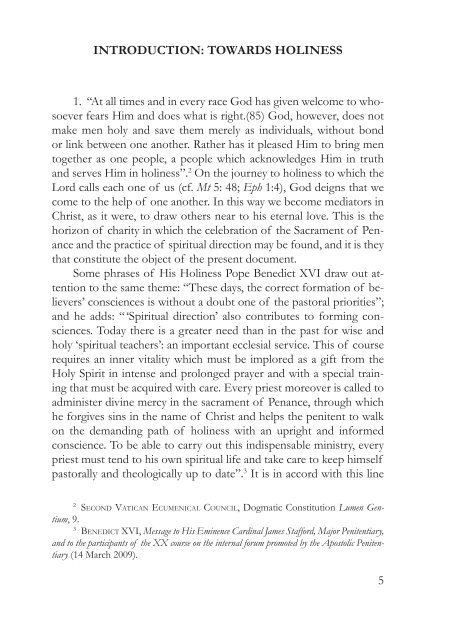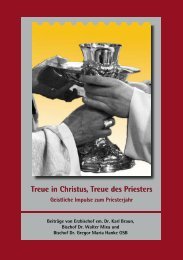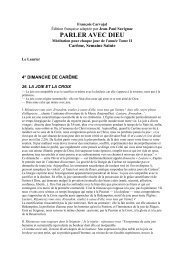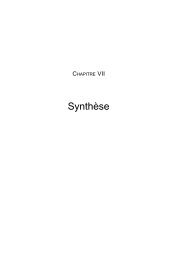the priest, minister of divine mercy - Congregation for the Clergy
the priest, minister of divine mercy - Congregation for the Clergy
the priest, minister of divine mercy - Congregation for the Clergy
Create successful ePaper yourself
Turn your PDF publications into a flip-book with our unique Google optimized e-Paper software.
5by majority vote. These procedures are designed to ensure that <strong>the</strong> legislaturecan develop and adopt plans that are coherent and reasoned – or in o<strong>the</strong>r words,so that it can exercise rational agency, like a single reasoning and choosingperson.In a well-functioning legislature, all its members accept that this is its ultimategoal, and <strong>the</strong>y also accept <strong>the</strong> procedures (including majoritarian decisionmaking)that have been adopted to pursue it. When particular plans are adoptedin accordance with those procedures, <strong>the</strong>y are adopted by <strong>the</strong> legislature, due to<strong>the</strong> prior acceptance <strong>of</strong> those procedures including majority voting. As with asimple group, those plans are <strong>the</strong> legislature's plans, or intentions. And it doesnot matter if many individual members knew very little about <strong>the</strong> details <strong>of</strong> aparticular plan. The size and complexity <strong>of</strong> <strong>the</strong> modern legislative agendarequires a division <strong>of</strong> labour. Of necessity, members develop specialisedinterests and expertise, and rely on <strong>the</strong> guidance <strong>of</strong> <strong>the</strong>ir peers and party leaders.A bill, or (after its enactment) a statute, is not just a text with a sparse, literalmeaning: it is a plan consisting <strong>of</strong> a presumptively coherent means designed toachieve certain ends. To endorse <strong>the</strong> plan it is not enough to endorse <strong>the</strong> literalmeaning <strong>of</strong> <strong>the</strong> text. All communications through a natural language rely on <strong>the</strong>ability <strong>of</strong> <strong>the</strong> intended audience to infer <strong>the</strong> speaker's intended meaning fromcontextual as well as textual clues. Hence, when reasonable legislators vote <strong>for</strong>or against a bill, <strong>the</strong>y understand that what <strong>the</strong>y are voting <strong>for</strong> is not merely atext with a sparse literal meaning, but a complex and reasoned plan involvingboth means and ends, which <strong>the</strong> text was designed by <strong>the</strong>ir colleagues tocommunicate. Even if <strong>the</strong>y have not given much thought to its detailedprovisions or even bo<strong>the</strong>red to read <strong>the</strong>m, <strong>the</strong> plan is “open” to <strong>the</strong>m, in that<strong>the</strong>y could easily learn more about it if <strong>the</strong>y wanted to.Ekins’ <strong>the</strong>ory does not entail that resort to Hansard or o<strong>the</strong>r extrinsic evidence<strong>of</strong> legislative intent is required or even permissible. There is plenty <strong>of</strong> o<strong>the</strong>rcontextual evidence <strong>of</strong> legislative intent, and he emphasises <strong>the</strong> dangers <strong>of</strong>inappropriate reliance on legislative history that have led BritishCommonwealth courts to be very wary <strong>of</strong> it.But in a Westminster parliament, most legislation is prepared and sponsored by<strong>the</strong> government, and passed with <strong>the</strong> support <strong>of</strong> <strong>the</strong> majority <strong>of</strong> members itcommands (at least in <strong>the</strong> lower House). Should <strong>the</strong> legislature be regarded ashaving endorsed <strong>the</strong> government's understanding <strong>of</strong> its ends and <strong>the</strong> means <strong>for</strong>







